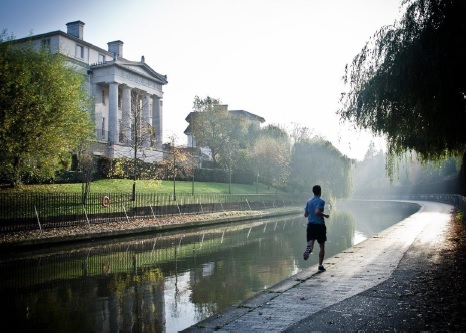Training Tips for Urban Runners
Race Training Tips for Urban Runners
Image via Pixabay

Regular exercise has many benefits including controlling weight, combating health conditions and diseases including everything from diabetes to depression, and promoting sounder sleep. Running, in particular, can provide a big boost to your mood and your confidence. The best part is you can do it almost anywhere and don’t need a lot of complicated gear.
In fact, you can start your running regime on your own city’s streets. And, considering many urban areas regularly host distance races, cities are some of the best places to train for marathons and other long runs. Public parks tend to be great places to run, and distance runners can even plan a longer route that includes multiple green spaces in a single session. City runners who want a break from running with traffic can also look for areas with long stretches of sidewalk, trails designed for running, walking, and biking, or parks and preserves that offer an oasis away from the urban environment. Here’s more advice from the 100 Marathon Club:
If you’re running in an urban environment, it’s especially important to plan your path. Take time to scout out or drive the route to make sure you’ll have plenty of room to run on the shoulder or sidewalk. The Road Runners Club of America also recommends varying your route pattern and leaving word of your route before you head out for a run.
During your session, be sure to run facing traffic. Follow the rules of the road or trail you’re on, including obeying traffic signals and looking both ways before crossing to avoid accidents with drivers, cyclists, and other runners and walkers. Bring your phone along for emergencies, but wear it on an armband so that your hands are free in case you need to brace yourself in a fall or use a handrail going down a section of stairs. Also, experts advise avoiding the temptation to wear headphones or otherwise tune out. It’s important to use all your senses to stay aware of your surroundings.
Runner’s World also suggests joining a running group in order to make longer runs go faster and help create a cadre of friends and supporters with the same interests. Running with a group or partner is also safer than running alone, especially at night or before sunup. If you’re running in the dark, be sure to choose a well-lighted route and wear bright, reflective clothing to make you more visible to drivers.
Staying Healthy and Hydrated During Training and Races
Although urban marathons and many other organized running events typically operate well-stocked first aid facilities, it never hurts to pack a few of your own essentials. And you should also have some supplies on hand during training. Start with basics like bandages, including some designed for blisters, antibacterial ointment, antibacterial wipes and hand sanitizer, and an over-the-counter pain reliever.
From there, personalize your runner’s first aid kit to fit your needs. At the very least, you should carry identification, including any important medical information. And, for a race day, consider writing your name, blood type, and emergency contact’s phone number on the inside sole of your running shoe.
Likewise, many races have hydration stations. But, during training, it’s critical to set your own strategy for staying hydrated. Some options include a waist belt designed to hold multiple bottles of water or sports drinks, a hydration pack or vest, or a cooler stashed in your car, on your porch, or in another safe spot you plan to loop back to during a long run.
Running is one of the easiest exercise routines to start. It also torches calories more effectively than many other workouts without requiring a pricey gym membership or personal training fees. And, for those who want to take their training to the next level, cities offer a multitude of marathons and other races where runners get together to strut their stuff. So if you’re ready, lace up your sneakers, implement these suggestions to stay safe and healthy, and start running today. Are you an avid marathon runner and have run 50 or more marathons? Join the 100 Marathon Club today!
